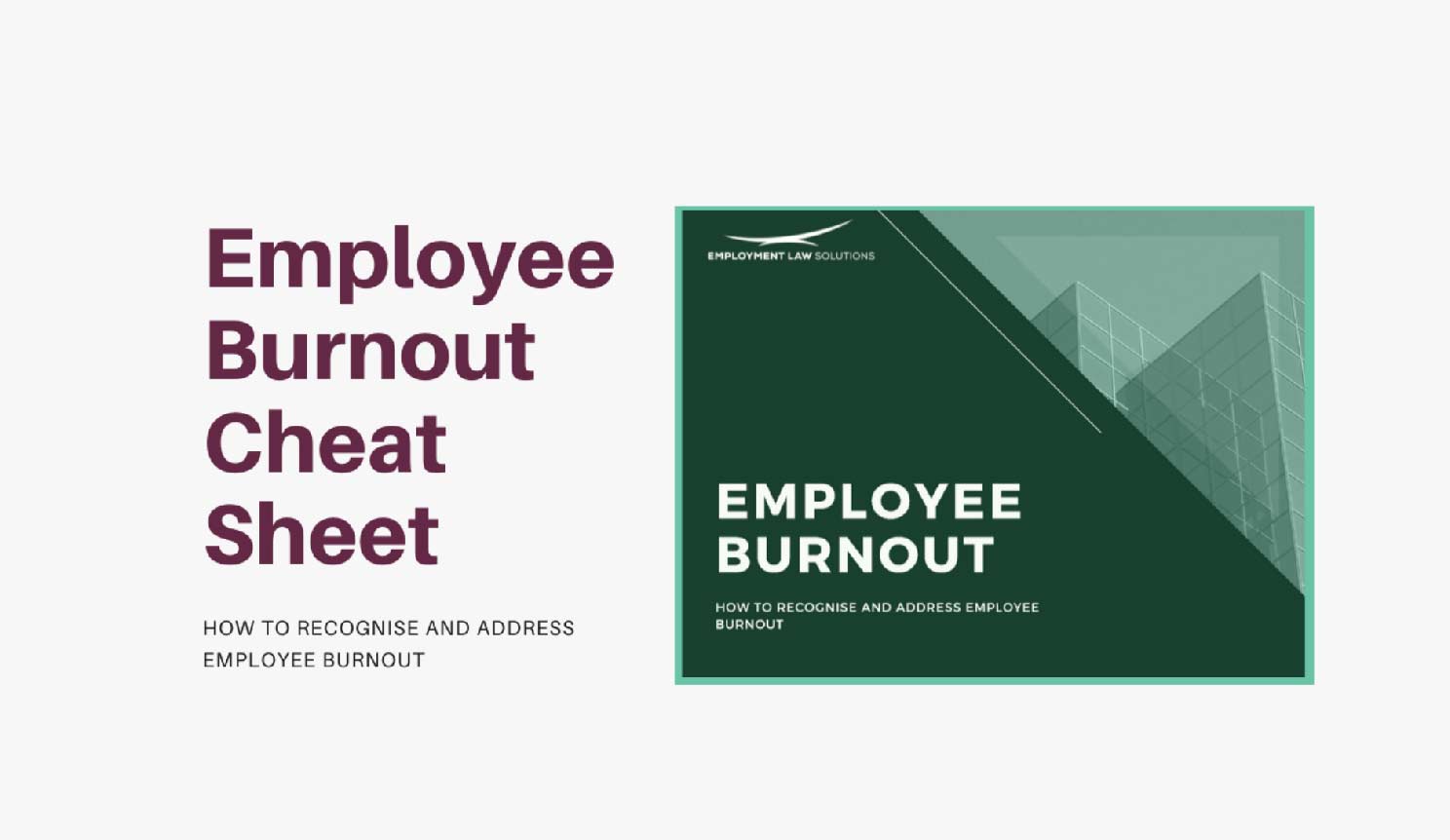As we move further into the year, and we transition out of the working from home routine, we are starting to see an increase in employees returning to the work place, and although employee burnout can arise in any working environment, it is important to be educated on the signs to look out for in the workplace.
But what is Employee Burnout, and how do I prioritise protecting my employees? This article will help to cure your headaches and offer you support through our Employee Burnout Cheat Sheet.
What is Employee Burnout?
Burnout is a state of physical, emotional, and mental exhaustion caused by excessive and prolonged stress – particularly within the workplace. Employee Burnout can lead to a number of problems in the workplace – reductions in productivity, motivation, and job satisfaction to name a few.
Recognising Employee Burnout early is one of the most effective methods of dealing with it. Our Employee Burnout Cheat Sheet can help you recognise and manage Employee Burnout early before it’s causing problems for you and your business.
Surveys have uncovered that a staggering 77% of professionals have experienced burnout at their current job – not just one in the past. While 87% of professionals say they have passion for their job, yet 64% of them frequently feel stressed or frustrated with their current job. Employee Burnout can reduce enthusiasm and promote disengagement among your employees.
Labour Force Survey self-reported estimates have estimated that 32.5 million working days were lost due to work-related ill health in 2019/2020 alone.
Understanding the symptoms of burnout allows you to proactively spot the signs. Our Employee Burnout Cheat Sheet provides a handy checklist you can use right now to spot some of the symptoms of Employee Burnout in your employees. The checklist includes indicators such as changes in agreeableness, reductions in attendance, and abnormal working hour habits.
Understanding employers legal duties to your employees, facing an employee burnout
As an employer, you have a duty of care under common law to reasonably support your employee’s health. While you may have already taken this into account in your business, did you know that mental health issues – potentially arising from Employee Burnout – can constitute a disability?
As defined in section 6 of the Equality Act 2010, an employee can be regarded as disabled if they have a physical or mental impairment that has a substantial and long-term effect on their ability to carry out day-to-day activities. If an employee is disabled, this creates additional obligations on you as an employer.
Questions to consider using the Employee Burnout Cheat Sheet:
- Does my employee have a mental impairment;
- Does that cause an inability to carry out day to day duties, which can include going to work, socialising, getting dressed or out of bed; and
- Has the impact been substantial and long term (Usually around 9-12 months onwards)
If the answer is yes to all of the above, the employee may be disabled. Failing to adhere to your obligations can give rise to claims against you either in the tribunal or for negligence.
Download our free Employee Burnout Cheat Sheet
As an employer, if you follow the checklist and know an employee has or might have a disability, it is important not to discriminate against them. Here are two of the most common areas in which claims could be brought against you for discrimination in the workplace.
Direct Discrimination
Section 13 of the Equality Act 2010 describes direct discrimination as being discrimination against a person because of a protected characteristic – of which disability is one. For example, if you as an employer were to reduce client load or otherwise treat an employee unfavourably because of a reason that is due to the disability, then you could be liable for direct discrimination. Consider, for example, that being repeatedly late for work was due to a mental health issue potentially caused by Employee Burnout – such as depression. Acting unfavourably towards that employee because of the repeated lateness – with the knowledge that it was due to the mental health issue – would constitute direct discrimination.
Failure to make Reasonable Adjustments
Section 20 of the Equality Act 2010 sets out that, as an employer of an individual with a disability, you have a duty to make adjustments that are reasonable in order to remove any substantial disadvantage faced by the employee compared to a non-disabled employee. For mental health or Employee Burnout, one reasonable adjustment could be to give them more rest breaks or to work with them each day to prioritise workload.
A happy, healthy workforce will, more often than not, be a productive workforce.
Seeking legal advice
Employment Law Solutions are here to help. Employee Burnout is a real headache for businesses – especially in these times. Our cheat sheet below will help you manage and spot potential problems in your workplace.
Employee Burnout is just one area in which we can help cure your HR headaches. We offer 24/7, 365 guidance providing stress-free, pragmatic solutions to your problems. Our mission is to help you concentrate on what you do best – running your business. Protecting your business will always be our main priority.




